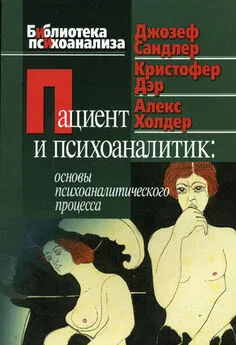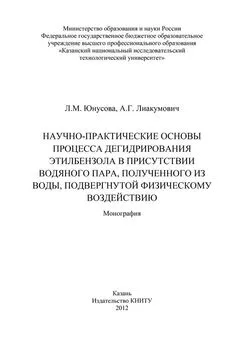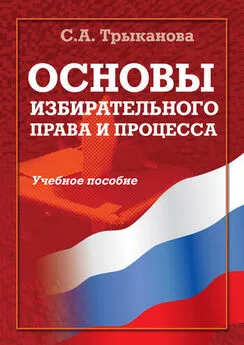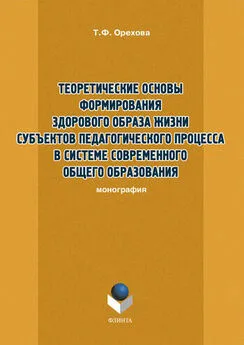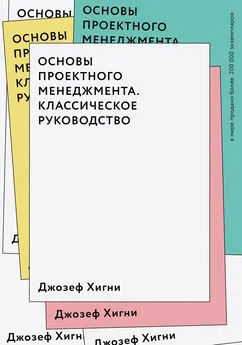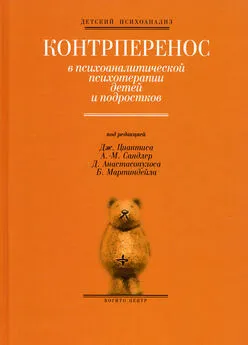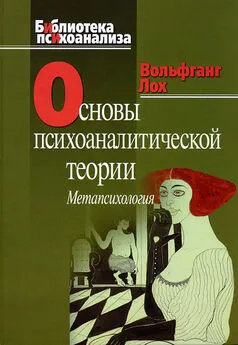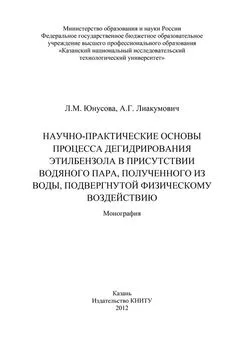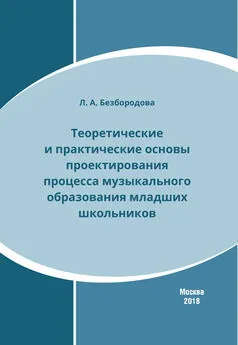Джозеф Сандлер - Пациент и психоаналитик: основы психоаналитического процесса
- Название:Пациент и психоаналитик: основы психоаналитического процесса
- Автор:
- Жанр:
- Издательство:неизвестно
- Год:неизвестен
- ISBN:нет данных
- Рейтинг:
- Избранное:Добавить в избранное
-
Отзывы:
-
Ваша оценка:
Джозеф Сандлер - Пациент и психоаналитик: основы психоаналитического процесса краткое содержание
Джозеф САНДЛЕР,
Кристофер ДЭР,
Алекс ХОЛДЕР
ПАЦИЕНТ И ПСИХОАНАЛИТИК:
ОСНОВЫ ПСИХОАНАЛИТИЧЕСКОГО ПРОЦЕССА
Пациент и психоаналитик: основы психоаналитического процесса - читать онлайн бесплатно ознакомительный отрывок
Интервал:
Закладка:
BLOS, P. (1963). The concept of acting out in relation to the adolescent process // Journal of the American Academy of Child Psychiatry, 2: 118—143.
BLOS, P. (1966). Discussion remarks // E. Rexford (Ed.), Developmental Approach to Problems of Acting Out. Monographs of the American Academy of Child Psychiatry, No. 1.
BLUM, H.P. (1971). On the conception and development of the transference neurosis // Journal of the American Psychoanalytic Association, 19, 41—53.
BLUM, H.P. (1973). The concept of erotized transference // Journal of the American Psychoanalytic Association, 21, 61—76.
BLUM, H.P. (1976). Acting out, the psychoanalytic process, and interpretation // The Annual of Psychoanalysis, 4: 163—184.
BLUM, H.P. (1981). The forbidden quest and the analytical ideal: the superego and insight // Psychoanalytic Quarterly, 50, 535—556.
BLUM, H.P. (1983). The position and value of extratransference interpretation // Journal of the American Psychoanalytic Association, 33, 587—617.
BLUM, H.P. (1985). Foreword // H.P. BLUM (Ed.), Defense and Resistance. – N.Y.: International Universities Press.
BLUM, H.P. (1986). Countertransference and the theory of technique: discussion // Journal of the American Psychoanalytic Association, 34, 309—328.
BOESKY, D. (1982). Acting out: a reconsideration of the concept // International Journal of Psycho-Analysis, 63: 39—55.
BOESKY, D. (1985). Resistance and character theory // H.P. BLUM (Ed.), Defense and Resistance. – N.Y.: International Universities Press.
BOLLAS, C. (1987). The Shadow of the Object: – Lndn.: Free Association Books.
BOSCHAN, P.J. (1987). Dependence and narcissistic resistances in the psychoanalytic process // International Journal of Psycho-Analysis, 68: 109—118.
BRANDSCHAFT, B. (1983). The negativism of the negative therapeutic reaction and the psychology of the self // A. Goldberg (Ed.), The Future of Psychoanalysis. – N.Y.: Guilford Press.
BRENNER, C. (1959). The masochistic character: genesis and treatment // Journal of the American Psychoanalytic Association, 7, 197—226.
BRENNER, C. (1976). Psychoanalytic Technique and Psychic Conflict – N.Y.: International Universities Press.
BRENNER, C. (1979). Working alliance, therapeutic alliance, and transference // Journal of the American Psychoanalytic Association, 27 (supplement), 137—157.
BRENNER, C. (1981). Defense and defense meshanisms // Psychoanalytic Quarterly, 50, 557—569.
BRENNER, C. (1982). The Mind in Conflict. – N.Y.: International Universities Press.
BRENNER, C. (1985). Countertransference as compromise formation // Psychoanalytic Quarterly, 54, 155—163.
BRENNER, C. (1987). Working through: 1914—1984 // Psychoanalytic Quarterly, 56, 88—108.
BROWN, G.W., BONE, M., DALISON, В., WING, J.R. (1966). Schizophrenia and Social Care: A Comparative Follow-up Study of 339 Schizophrenic Patients. – Lndn: Oxford University Press.
BUIE, D.H., ADLER, G. (1982—3). Definitive treatment of the borderline personality // International Journal of Psychoanalytic Psychotherapy, 9: 51—87.
BUSH, M. (1978). Preliminary considerations for a psychoanalytic theory of insight: historical perspective // International Review of Psychoanalysis, 5: 1—13.
CALOGERAS, R., ALSTON, T. (1985) Family pathology and the infantile neurosis // International Journal of Psycho-Analysis, 66: 359—374.
CESIO, F.R. (1956). Un caso de reaccion terapeutica negativa // Revista de psicoanalisis, 13: 522—526.
CESIO, F.R. (1958). La reaccion terapêutica negativa // Revista de psicoanalisis, 15: 293—299.
CESIO, F.R. (1960a). El letargo, un contribucion al estudio de la reaccion terapeutica negativa // Revista de psicoanalisis, 17: 10—26.
CESIO, F.R. (1960b). Contribucion al estudio de la reaccion terapeutica negativa // Revista de psicoanalisis, 17: 289—298.
CHEDIAK, C. (1979). Counter-reactions and countertransference // International Journal of Psycho-Analysis, 60: 117—129.
COEN, S.J. (1981) Sexualization as a predominant mode of defense // Journal of the American Psychoanalytic Association, 29, 893—920.
COHEN, M.B. (1952). Counter-transference and anxiety // Psychiatry, 15, 231—243.
COLARUSSO, C.A., NEMIROFF, R.A. (1979). Some observations and hypotheses about the psycho-analytic theory of adult development // International Journal of Psycho-Analysis, 60: 59—71.
COMPTON, A. (reporter) (1977). Panel: Psychic change in psychoanalysis // Journal of the American Psychoanalytic Association, 25, 669—678.
COOPER, A.M. (1987a). Changes in psychoanalytic ideas: transference interpretation // Journal of the American Psychoanalytic Association, 35, 77—98.
COOPER, A.M. (1987b). The transference neurosis: a concept ready for retirement // Psychoanalytic Inquiry, 7, 569—585.
CURTIS, H.C. (1979). The concept of therapeutic alliance: implications for the «widening scope» // Journal of the American Psychoanalytic Association, 27 (supplement), 159—192.
DAVIES, S. (1990). Whose treatment alliance is it anyhow? // Paper to Weekend Conference for English-speaking Members of European Societies. – Lndn.
DEUTCH, H. (1939). A discussion of certain forms of resistance // International Journal of Psycho-Analysis, 20: 72—83.
DEUTCH, H. (1966). Discussion remarks // E. Rexford (Ed.), Developmental Approach to Problems of Acting Out. Monographs of the American Academy of Child Psychiatry, No. 1.
DEWALD, P.A. (1980). The handling of resistances in adult psychoanalysis // International Journal of Psycho-Analysis, 61: 61—69.
DEWALD, P.A. (1982). Serious illness in the analyst: transference, countertransference, and reality resposes // Journal of the American Psychoanalytic Association, 30: 347—364.
DICKES, R. (1967). Severe regressive disruptions of the therapeutic alliance // Journal of the American Psychoanalytic Association, 15, 508– 533.
DICKES, R. (1975). Technical considerations of the therapeutic and working alliances // International Journal of Psychoanalytic Psychotherapy, 4: 1—24.
EAGLE, M.N., WOLITZKY, D.L. (1989). The idea of progress in psychoanalysis // Psychoanalysis and Contemporary Thought, 12: 27—72.
EIDELBERG, L. (1948). A contribution to the study of masochism // Studies in Psychoanalysis. – N.Y.: International Universities Press.
EIDELBERG, L. (Ed.) (1968). Encyclopedia of Psychoanalysis. – N.Y.: The Free Press.
EISSLER, K. R. (1953). The effect of the structure of the ego on psychoanalytic technique // Journal of the American Psychoanalytic Associalion, 1, 104—143.
EKSTEIN, R. (1966). Termination of analysis and working through // R.E. Litman (Ed.), Psychoanalysis in the Americas: Original Contributions from the First Pan-American Congress for Psychoanalysis. – N.Y.: International Universities Press.
ENGLISH, O.S., PEARSON, G.H. (1937) Common Neuroses of Children and Adults. – N.Y.: W.W. Norton.
ERARD, RE. (1983). New wine in old skins: a reappraisal of the concept «acting out» // International Review of Psycho-Analysis, 10: 63—73.
ERIKSON, E.H. (1950). Childhood and Society. – N.Y.: W.W. Norton.
ERIKSON, E.H. (1956). The problem of ego identity // Journal of the American Psychoanalytic Association, 4, 56—121.
ERIKSON, E.H. (1968). Identity, Youth and Crisis. – N.Y.: Norton.
ESCOLL, P.J. (reporter) (1983). Panel: The changing vistas of transference: the effect of developmental concept on the understanding of transference // Journal of the American Psychoanalytic Association, 31, 699– 711.
EVANS, R. (1976). Development of the treatment alliance in the analysis of an adolescent boy // The Psychoanalytic Study of the Child, 31: 193– 224.
FAIRBAIRN, W.R.D. (1958). On the nature and aims of psychoanalytical treatment // International Journal of Psycho-Analysis, 39: 374—385.
FEDERN, P. (1943). Psychoanalysis of psychoses // Psychiatric Quarterly, 17, 3—19, 246—257, 470—487.
FEIGENBAUM, D. (1934). Clinical fragments // Psychoanalytic Quarterly, 3, 363—390.
FENICHEL, O. (1937). On the theory of the therapeutic results of psycho-analysis // International Journal of Psycho-Analysis, 18: 133—138.
FENICHEL, O. (1941). Problems of Psychoanalytic Technique. – N.Y.: Psychoanalytic Quarterly, Inc.
FENICHEL, O. (1945a). The Psychoanalytic Theory of Neurosis. – Lndn: Routledge & Kegan Paul.
FENICHEL, O. (1945b). Neurotic acting out // Psychoanalytic Review, 32, 197—206.
FENICHEL, O. (1954). Symposium on the therapeutic results of psychoanalysis // Collected Papers, Vol. 2. – Lndn: Routledge & Kegan Paul.
FERENCZI, S. (1912). Transitory symptom-constructions during the analysis (transitory conversion, substitution, illusion, hallucination, character-regression, and expression-displacement) // Sex in Psycho-Analysis. – N.Y.: Basic Books, 1950.
FERENCZI, S. (1914). Falling asleep during the analysis // Further Contributions to the Theory and technique of Psycho-Analysis. – Lndn.: Hogarth Press, 1926. [Reprinted Lndn: Karnac Books, 1980.]
FERENCZI, S., RANK, O. (1925). The Development of Psycho-Analysis. – N.Y.; Washington: Nervous & Mental Diseases Publishing Company.
FISCHER, N. (1971). An interracial analysis: transference and counter-transference significance // Journal of the American Psychoanalytic Association, 19, 736—745.
FLIESS, R. (1942). The metapsychology of the analyst // Psychoanalytic Quarterly, 11, 211—227.
FLIESS, R. (1953). Counter-transference and counter-identification // Journal of the American Psychoanalytic Association, 1, 268—284.
FONAGY, P. (1990). Discussion of Kit Bollas’s paper, «The origins of the therapeutic alliance» // Paper to Weekend Conference for English-speaking Members of European Societies. – Lndn.
FRANK, A. (1985). Id resistance and the strengh of the instincts // H.P. BLUM (Ed.), Defense and Resistance. – N.Y.: International Universities Press.
FRENCH, T.M. (1939). Insight and distortion in dreams // International Journal of Psycho-Analysis, 20: 287—298.
FREUD, A. (1928). Introduction to the Technique of Child Analysis. – N.Y.; Washington: Nervous & Mental Diseases Publishing Company. Рус. пер.: Фрейд А. Введение в технику детского психоанализа. М., 1991.
FREUD, А. (1936). The Ego and the Mechanisms of Defense. – Lndn.: Hogarth Press. Рус. пер.: Фрейд А. Психология Я и защитные механизмы. М.: Педагогика—Пресс, 1993.
FREUD, A. (1954). The widening scope of indications for psychoanalysis: discussion // Journal of the American Psychoanalytic Association, 2, 607—620.
FREUD, A. (1965). Normality and Pathology in Childhood. – Lndn.: Hogarth Press, 1926. [Reprinted Lndn: Karnac Books, 1989.]
FREUD, A. (1968). Acting out // International Journal of Psycho-Analysis, 49: 165—170.
FREUD, A. (1969). Difficulties in the Path of Psychoanalysis – N.Y.: International Universities Press.
FREUD, A. (1971). The infantile neurosis // The Psychoanalytic Study of the Child, 26: 79—90.
FREUD, A. (1981). Insight, its presence and absence as a factor in normal development // The Psychoanalytic Study of the Child, 36: 241—249.
FREUD, S. (1895d). Studies on Hysteria // Standard Edition, 2. – Lndn.: Hogarth Press.
FREUD, S. (1896b). Further remarks on the neuro-psychoses of defence // Standard Edition, 3. – Lndn.: Hogarth Press.
FREUD, S. (1897). Letter to Wilhelm Fliess of 21 September 1897 // The Origins of Psycho-Analysis: Letters to Wilhelm Fliess, Drafts and Notes. – Lndn.: Imago, 1954.
Читать дальшеИнтервал:
Закладка:

